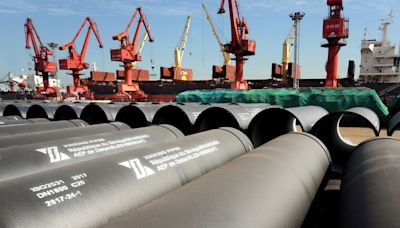Search results
People also ask
Who are the first Chinese in the Philippines?
Where did Chinese settle in the Philippines?
How did Chinese influence Filipino economic life?
What are the two earliest Chinese-founded Filipino banks?
The first school founded specifically for the Chinese in the Philippines, the Anglo-Chinese School (now known as Tiong Se Academy) was opened in 1899 on the Qing Dynasty Chinese Embassy grounds.
Chinese trade in the Philippines. While historians have never established a definitive date for the first contact between China and the Philippines, the date currently accepted is 982. This was the year when merchants from the Philippines first took their items to Guangzhou and Quanzhou in search of trade opportunities, as noted by Ma Tuan-lin ...
- Economic Activities
- Housing and Use of Space
- Marriage, Family, and Households
- Socialization and Education
- Community Organization and Structure
- Religious Beliefs and Practices
- Ceremonies and Holidays
Prior to the coming of the Spaniards, Chinese merchants were already active in Philippine trade, but they were itinerant merchants who brought their wares to the country in exchange for native goods and products. With the establishment of Spanish settlement, Chinese economic activity expanded. The native Filipinos were still engaged in subsistence ...
Before 1975, when majority of the Chinese were not yet Filipino citizens, most Tsinoys lived in rented apartments because they could not own property. Many in fact resided above their business establishments, allowing them to work long hours. Today, the Tsinoys live as single families away from their parents and many own houses in plush subdivision...
During the colonial period, Chinese women were relatively absent. The Chinese immigrants either had families in China and/or had established a new “mestizo” family in the Philippines by marrying Filipinas. When the American policy allowed spouses and children to migrate to the Philippines in early twentieth century, the gender ratio started to even...
At the turn of the twentieth century, the increased repression and cruelty of the Spanish and of the American colonizers fostered a strong spirit of communalism among the local Chinese. Chinese institutions such as schools, press, and other associations were set up as agencies of communal mobilization and cultural renewal. At the same time, the pol...
There are more than a 1,000 organizations in the Philippines formed along the lines of Chinese ethnicity. They are broadly differentiated according to three orientations: China oriented, Chinese community oriented, and Philippine oriented. Chinese Community-Oriented Organizations.Chinese community-oriented organizations are the most common. They ar...
Religion plays a central part in the daily life of both the Filipinos and the ethnic Chinese minority. Ninety percent of the Filipino population is Christian, 5% Muslim, and the remainder a mixture of Buddhist, Taoist, and animist. Of the Christians, 92% are Roman Catholic, 8% Protestant. There are some homegrown Christian groups, notably Iglesia N...
Every city, town, and village holds at least one festival every year, usually related to such dates as the “birthday” of the local patron saint or other religious icon, a harvest thanksgiving, a historical or mythological anniversary, or a combination of all these. The Tsinoys usually participate in the local festivals in their own provinces and mu...
- Teresita Ang See
Feb 4, 2019 · Most of the Chinese who settled in the Philippines came from Fujian or Guangdong, braving harsh waters and defying the will of the Ming Emperor himself, who forbade people from leaving China.
This article considers only the origin of the Chinese economic position in the Philippines. An attempt is made to survey, in general and non-technical terms, the history of Chinese economic activities in the Philippines during the period from i850 to i898.
Chinese in the Philippines, The Thousands of Chinese immigrants arrived in the Spanish Philippines to profit from the Galleon Trade, by which goods passed between China and Mexico. Many Chinese assimilated into Filipino society, intermarrying with native Indios and others, as well as with Spaniards.
It is said to derive from the Hokkien seng-li (“business”) or shang-lu (“traveling merchant”), which is an apt description for the earliest Chinese to settle in Cebu after the Miguel Lopez de Legazpi expedition arrived in Cebu in 1565 and founded the Spanish villa or ciudad called Santisimo Nombre de Jesus (that corresponds to today’s district a...


